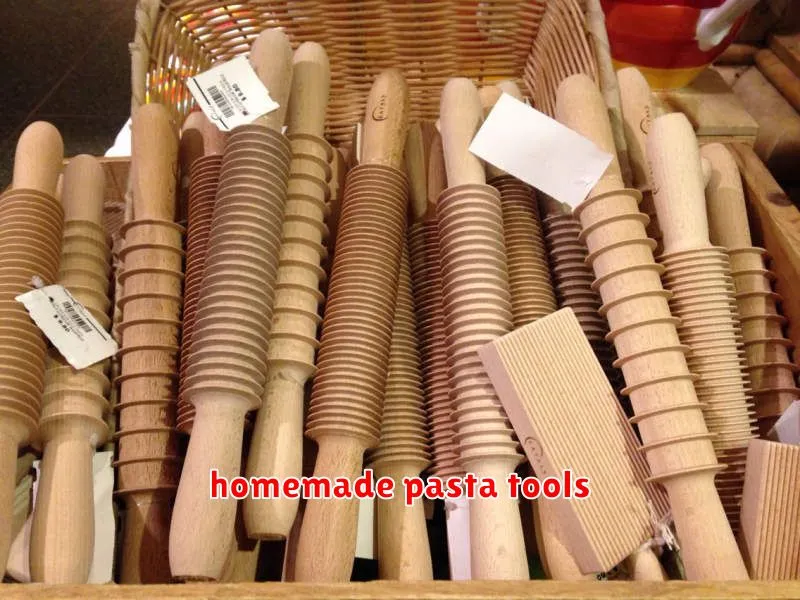Craving homemade pasta that rivals your favorite Italian restaurant? Stop dreaming and start cooking! With the right kitchen tools, you can transform your pasta game from ordinary to extraordinary. Forget about bland, store-bought noodles – homemade pasta offers a symphony of flavors and textures you won’t find anywhere else.
Imagine the satisfaction of creating your own perfect pasta shapes, each bite bursting with fresh, vibrant flavors. From simple fettuccine to elegant ravioli, you can create culinary masterpieces in your own kitchen. But before you get started, you’ll need the right equipment. This guide will introduce you to the essential kitchen tools that will elevate your pasta-making journey to new heights.
Pasta Maker
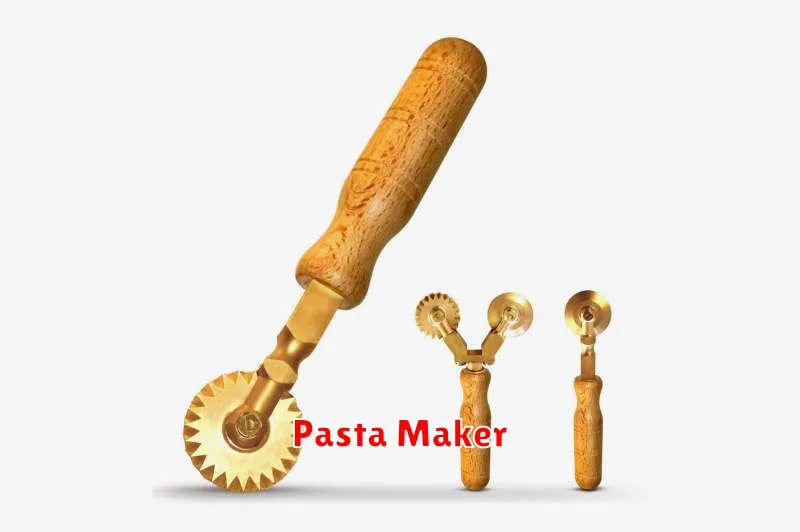
A pasta maker is a kitchen appliance that helps you make fresh pasta at home. It typically consists of a set of rollers that flatten dough and cutters that shape it into various pasta types. Pasta makers can be manual or electric, and they come in a range of sizes and price points.
Using a pasta maker can be a fun and rewarding way to enjoy homemade pasta. It allows you to control the ingredients, thickness, and shape of your pasta, giving you endless possibilities for culinary creativity. Some of the benefits of using a pasta maker include:
- Freshness: Homemade pasta made with a pasta maker is fresher than store-bought pasta, with a more intense flavor and texture.
- Customization: You can choose the type of flour, add ingredients like spinach or beetroot, and create unique pasta shapes that you won’t find in the supermarket.
- Fun and rewarding: Making pasta with a pasta maker can be a fun and relaxing activity, especially when shared with friends or family.
If you’re considering adding a pasta maker to your kitchen arsenal, there are a few key factors to consider:
- Type: Manual pasta makers are typically less expensive and require some physical effort, while electric models are more convenient and faster.
- Size: Choose a pasta maker that fits your needs and the size of your kitchen. Consider the amount of pasta you typically make.
- Features: Some pasta makers come with additional features like attachments for different pasta shapes or adjustable thickness settings.
Investing in a pasta maker can be a great way to elevate your cooking skills and enjoy the deliciousness of homemade pasta. It’s a versatile appliance that can help you create a variety of pasta dishes, from classic spaghetti to elaborate ravioli.
Pasta Cutter
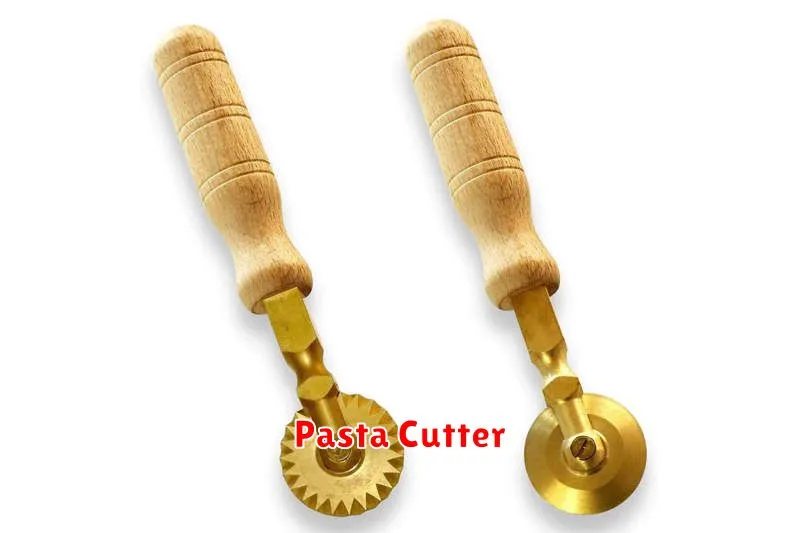
A pasta cutter is a kitchen tool that makes cutting fresh pasta dough into various shapes. It typically consists of two rollers that flatten the dough, followed by a set of blades that cut the dough into the desired shape. You can find pasta cutters in various sizes and with different blade configurations, allowing you to make different pasta shapes like fettuccine, tagliatelle, pappardelle, and more.
Using a pasta cutter can help you achieve perfectly even and consistent pasta shapes, which can enhance both the aesthetic and the taste of your homemade pasta. It allows for easier handling and cooking of the pasta, ensuring that it cooks evenly and doesn’t stick together.
If you are serious about making homemade pasta, investing in a good quality pasta cutter can be a worthwhile investment. It can help you elevate your pasta game and create delicious, restaurant-quality pasta dishes at home.
Rolling Pin
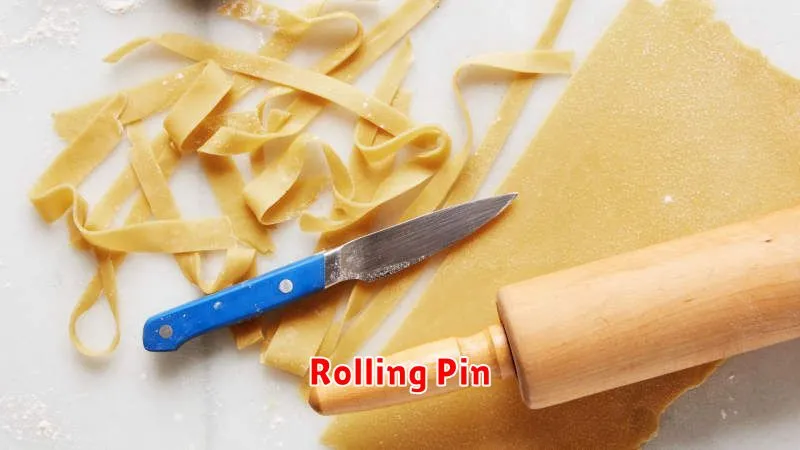
A rolling pin is an essential tool for achieving perfectly rolled pasta dough. It helps to create a smooth, even sheet of dough that is ideal for cutting into various pasta shapes. You can choose between a traditional wooden rolling pin or a modern, non-stick rolling pin. Wooden rolling pins are often preferred for their natural feel and ability to absorb moisture from the dough. Non-stick rolling pins are great for preventing dough from sticking and require less flour.
When using a rolling pin, it’s crucial to apply even pressure and roll the dough in all directions. Start with a small amount of flour on your work surface and the dough to prevent sticking. As you roll the dough, gradually reduce the amount of flour to achieve the desired thickness.
With a little practice, you’ll be able to roll out pasta dough like a pro. Experiment with different types of dough and shapes to create a variety of homemade pasta dishes.
Ravioli Stamp
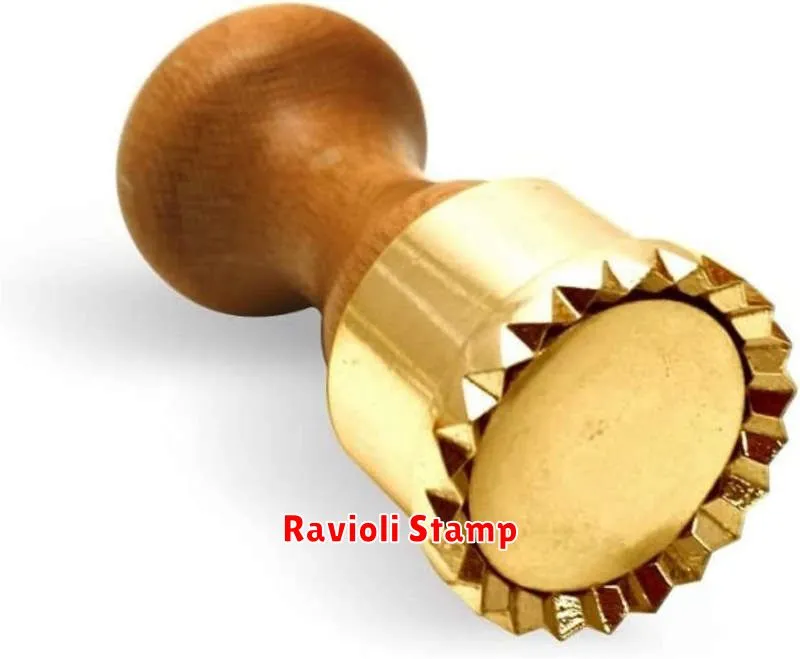
A ravioli stamp is a kitchen tool that helps you create perfectly shaped and evenly sized ravioli. It consists of two parts: a base with a mold and a top that presses down on the dough, creating the desired shape. Ravioli stamps are typically made of plastic or metal and come in a variety of sizes and designs, allowing you to make different shapes, such as squares, circles, and even intricate patterns.
To use a ravioli stamp, you simply place a sheet of pasta dough on the base, fill the molds with your desired filling, and then press the top down firmly. The stamp will cut out the ravioli and create a clean, even edge. This ensures that your ravioli are consistent in size and shape, making them easier to cook and serve.
Ravioli stamps are a great way to add a touch of elegance to your homemade pasta. They can also be used to make other types of filled pasta, such as tortellini or agnolotti. If you’re looking to level up your pasta game, a ravioli stamp is a must-have tool for your kitchen.
Gnocchi Board
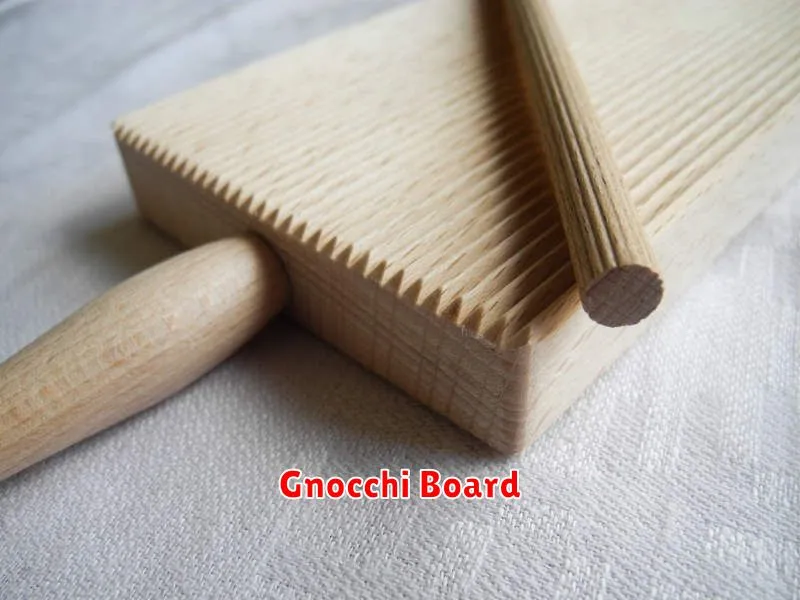
A gnocchi board is a specialized kitchen tool designed specifically for creating perfectly textured gnocchi. It features a series of ridges or grooves that you roll the gnocchi dough over to give it the distinctive, slightly bumpy surface that characterizes this Italian pasta.
The ridges help to create a light and airy texture by gently pressing out the excess air and forming indentations in the dough. This not only makes the gnocchi more visually appealing but also helps it to cook evenly and absorb sauce more effectively.
While not strictly necessary for making gnocchi, a gnocchi board can greatly enhance the quality and consistency of your results. It’s a simple yet effective tool that can help you take your gnocchi game to the next level.
Pastry Brush
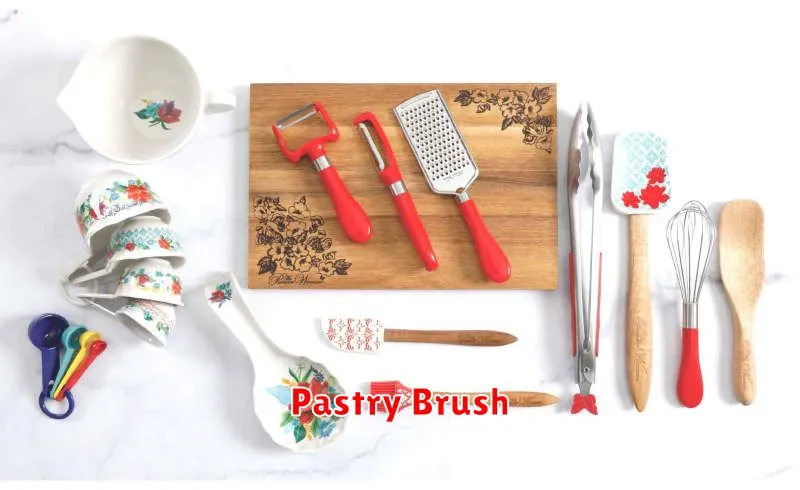
A pastry brush is a kitchen tool that looks deceptively simple, but plays a crucial role in achieving the perfect homemade pasta dish. It’s primarily used to apply a thin layer of oil or sauce to your pasta dough before cooking, ensuring a smooth texture and preventing sticking to the pot or cooking surface.
The bristles of a pastry brush are typically made of natural or synthetic materials like silicone, nylon, or even animal hair. They come in various sizes and shapes, with some having angled heads for easier access to the corners of your pasta sheets.
When choosing a pastry brush for pasta, opt for one with a comfortable handle and bristles that are soft but sturdy enough to evenly distribute the oil or sauce. It’s important to clean your pastry brush thoroughly after each use to prevent any build-up of food residue and maintain its effectiveness.
Bench Scraper
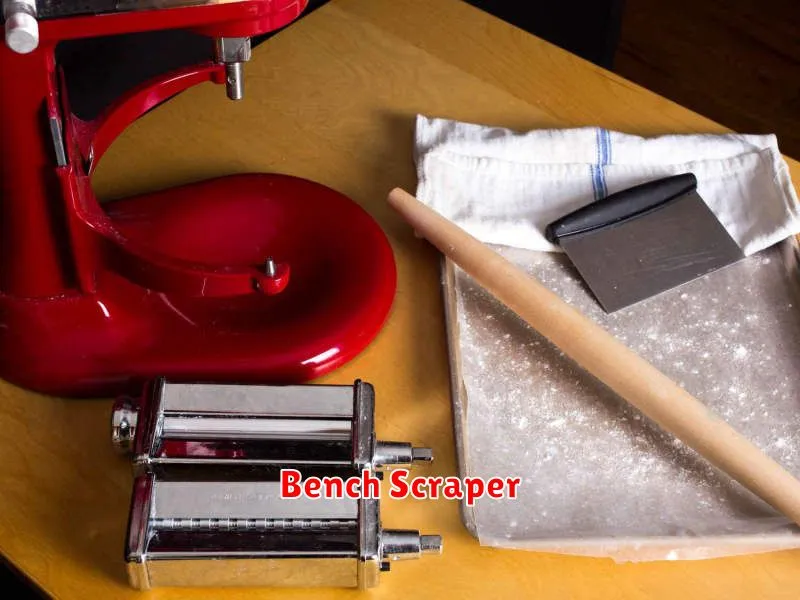
A bench scraper is an essential tool for any pasta maker, whether you’re a seasoned pro or just starting out. This versatile tool is used for a variety of tasks, including:
- Scraping dough from your work surface, ensuring you get every last bit.
- Cutting dough into even portions, whether you’re making ravioli or tagliatelle.
- Lifting pasta from your work surface to prevent sticking.
- Cleaning your work surface, leaving it spotless for your next culinary masterpiece.
Bench scrapers come in various sizes and materials. For pasta making, a metal scraper with a straight edge is ideal. Choose one that’s comfortable to hold and has a firm blade to ensure efficient and precise cutting.
Large Pot
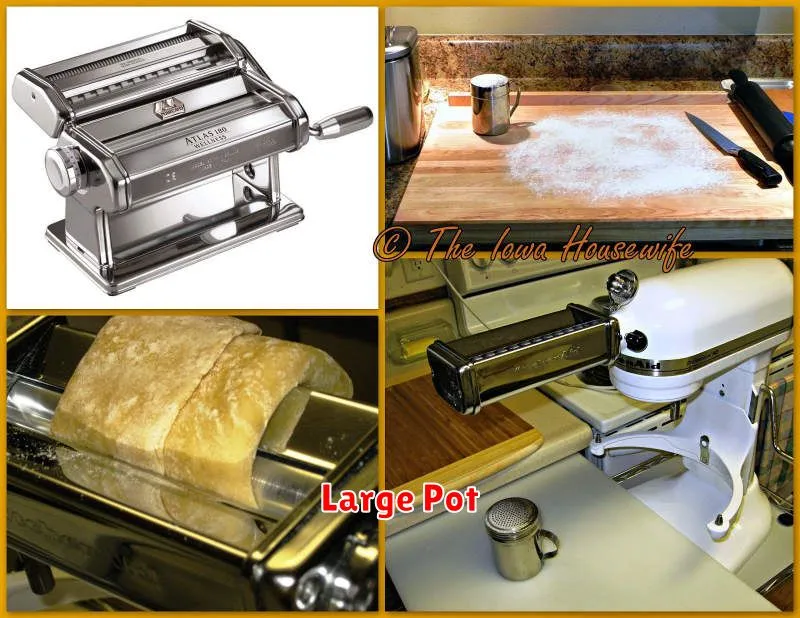
A large pot is essential for making pasta. You’ll need a pot that’s big enough to hold all the pasta and water without overflowing. Aim for a pot that’s at least 8 quarts in size.
When choosing a pot, look for one with a heavy bottom, which will help to distribute heat evenly and prevent hot spots. A lid is also important, as it will help to keep the water boiling and prevent pasta from sticking together.
Colander

A colander is essential for draining pasta. Choose one made of sturdy, durable material like stainless steel or plastic. Look for a colander with large holes that allow water to drain quickly, but small enough to prevent pasta from falling through. A wide base ensures stability while draining and a handle that is comfortable to grip is a bonus.
When draining pasta, use a colander that is large enough to hold all of the pasta without overflowing. Rinse the pasta in the colander under cold water to stop the cooking process and prevent the pasta from sticking together. A colander is not just for pasta; it can also be used to drain other foods such as vegetables and fruits.
Pasta Drying Rack
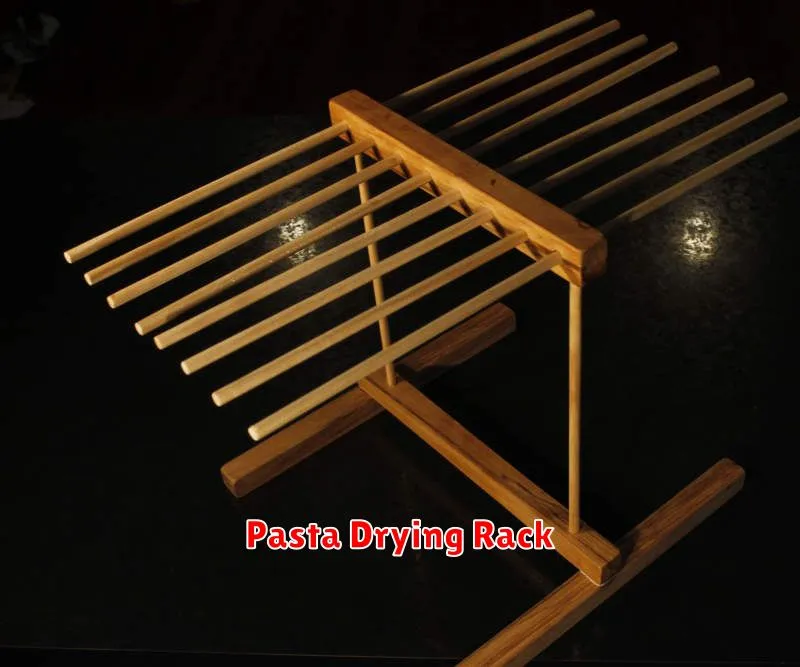
A pasta drying rack is a must-have tool for any serious home cook looking to elevate their pasta game. It’s specifically designed to dry fresh pasta, preventing it from sticking together and ensuring it cooks evenly. This simple but essential tool allows you to create perfect, restaurant-quality pasta dishes right in your own kitchen.
A pasta drying rack typically consists of a frame with multiple tiers or levels. The frame is usually made of sturdy materials like stainless steel or wood. The tiers are often wire or mesh, allowing air to circulate freely around the pasta as it dries.
The benefits of using a pasta drying rack are numerous:
- Prevents sticking: The open design prevents freshly made pasta strands from clinging together, ensuring individual pieces.
- Promotes even drying: The airflow from all sides ensures consistent drying, preventing uneven cooking and mushy pasta.
- Improves texture: Properly dried pasta boasts a delightful al dente texture with a firm bite.
- Adds elegance: A pasta drying rack adds a touch of sophistication to your kitchen, showcasing your culinary prowess.
Whether you’re a seasoned pasta chef or just starting your culinary journey, investing in a quality pasta drying rack is a wise decision. It’s a simple yet powerful tool that will elevate your pasta-making experience, resulting in dishes that are both delicious and impressive.

